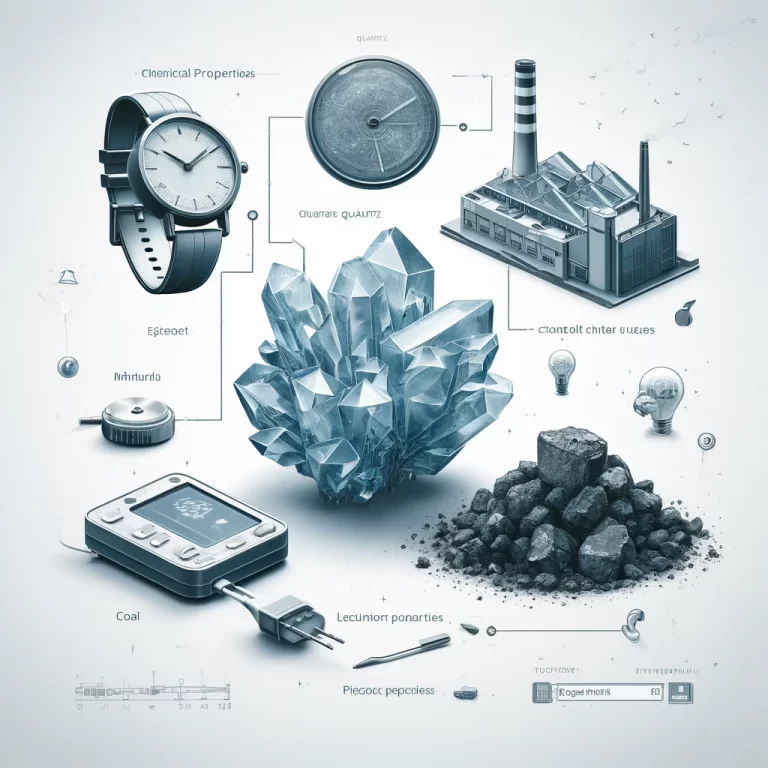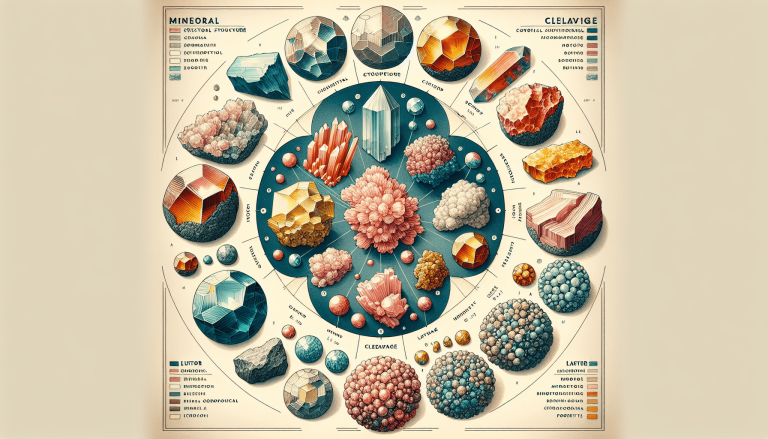Key Concepts To Understand When Studying Mineral Phase Transitions And Chemical Properties
When diving into the fascinating world of mineral phase transitions and chemical properties, it’s crucial to grasp some key concepts to make sense of the intricate processes at play. From understanding the different phases minerals can transition between to recognizing how chemical properties influence these transformations, having a solid foundation in these fundamental concepts is essential for any aspiring geologist or materials scientist. By delving into the nuances of these principles, you’ll be better equipped to navigate the complexities of mineralogy and appreciate the incredible diversity and transformations that occur in the earth’s crust.
Have you ever wondered what happens to minerals when they undergo phase transitions?
Minerals are critical components of the Earth’s crust, and understanding how they change from one phase to another is essential in various fields, from geology to materials science. In this article, we will explore key concepts to help you grasp the complexities of mineral phase transitions and their chemical properties. Let’s dive in and unlock the mysteries of these fascinating processes!

Understanding Mineral Phase Transitions
Mineral phase transitions refer to the physical and chemical changes that occur within minerals when exposed to different temperature, pressure, or compositional conditions. These transitions can lead to alterations in crystal structure, mineral composition, and overall properties. By comprehending these changes, scientists can better predict how minerals behave under varying environmental conditions.
Crystal Structure Changes
When a mineral undergoes a phase transition, its crystal structure may experience modifications, leading to the formation of new crystallographic phases. These changes can significantly impact the mineral’s physical properties, such as hardness, density, and color. For example, the transition of quartz (SiO2) from a low-temperature trigonal phase to a high-temperature hexagonal phase alters its crystal structure, resulting in a transformation from transparent to opaque.
Phase Diagrams: A Visual Representation
Phase diagrams are graphical representations that depict the stability regions of different mineral phases as a function of temperature and pressure. By examining phase diagrams, researchers can determine the conditions under which specific phase transitions occur and predict the behavior of minerals in response to environmental changes. These diagrams serve as valuable tools for interpreting complex phase relationships and understanding the thermodynamic controls on mineral stability.
Chemical Properties of Minerals
In addition to phase transitions, the chemical properties of minerals play a crucial role in defining their behavior and characteristics. These properties encompass a wide range of attributes, including composition, bonding, and reactivity, which influence how minerals interact with their environment and other substances.
Composition and Formula
The chemical composition of a mineral refers to the elements present within its structure and the relative proportions of these elements. Mineral formulas provide a concise representation of these compositions, indicating the types and quantities of atoms that constitute the mineral’s building blocks. For instance, the formula for calcite (CaCO3) reveals that it contains calcium, carbon, and oxygen in specific ratios, forming its distinctive crystalline structure.
Bonding and Stability
The bonding interactions between atoms in a mineral determine its stability and physical properties. Covalent, ionic, and metallic bonds are common in mineral structures, each contributing to the overall stability and reactivity of the mineral. For example, diamonds exhibit strong covalent bonds between carbon atoms, making them exceptionally hard and resistant to chemical corrosion.

Analytical Techniques for Studying Minerals
To investigate the phase transitions and chemical properties of minerals, scientists employ a variety of analytical techniques that provide valuable insights into their structural and compositional characteristics. These techniques range from traditional methods like microscopy to advanced spectroscopic tools that offer detailed chemical information.
X-Ray Diffraction (XRD)
X-ray diffraction is a widely used technique for analyzing the crystal structure of minerals by measuring the diffraction patterns produced when X-rays interact with the mineral’s lattice. This method enables researchers to identify mineral phases, determine crystallographic parameters, and monitor structural changes during phase transitions. XRD data are essential for constructing accurate phase diagrams and understanding the relationships between different mineral phases.
Scanning Electron Microscopy (SEM)
Scanning electron microscopy allows scientists to examine the surface morphology and elemental composition of minerals at high magnification. By generating detailed images of mineral structures and textures, SEM provides valuable information on grain boundaries, fracture patterns, and crystal defects. This technique is particularly useful for investigating the effects of phase transitions on mineral surfaces and interfaces.
The Role of Thermodynamics in Mineral Transformations
Thermodynamics plays a central role in governing the behaviors of minerals during phase transitions and chemical reactions. By applying thermodynamic principles, scientists can predict the energy changes associated with phase transformations and determine the equilibrium conditions under which these transitions occur.
Gibbs Free Energy and Stability
The concept of Gibbs free energy is crucial in assessing the stability of mineral phases under different temperature and pressure conditions. Minerals tend to transform into phases with lower free energy to achieve thermodynamic stability. By calculating the Gibbs free energy of competing mineral phases, researchers can predict the direction of phase transitions and identify the conditions that favor particular phase assemblages.
Equilibrium vs. Kinetics
In mineral transformations, the distinction between equilibrium and kinetics is essential in understanding the time scales and mechanisms of phase transitions. Equilibrium processes occur when minerals reach a stable state with minimal free energy, whereas kinetic processes involve the transformation of minerals under non-equilibrium conditions. Studying the interplay between equilibrium and kinetics provides valuable insights into the driving forces behind mineral phase transitions.
Practical Applications and Significance
The study of mineral phase transitions and chemical properties has far-reaching implications across various scientific disciplines and industrial sectors. Understanding how minerals transform under different conditions can lead to innovations in materials science, environmental remediation, and natural resource exploration.
Materials Science and Engineering
In materials science, the knowledge of mineral phase transitions is essential for designing new materials with tailored properties and functionalities. By manipulating the crystal structures and compositions of minerals, researchers can develop advanced materials with enhanced mechanical, thermal, and electrical properties. This knowledge also facilitates the optimization of industrial processes and the identification of novel materials for technological applications.
Environmental Impact and Sustainability
Mineral phase transitions play a critical role in environmental processes, such as mineral weathering, soil formation, and nutrient cycling. By studying how minerals interact with water, air, and organic matter, scientists can assess the environmental impact of human activities and develop sustainable strategies for resource management. Understanding the chemical properties of minerals is fundamental in addressing environmental challenges and promoting ecological balance.
Conclusion
In conclusion, the study of mineral phase transitions and chemical properties is a complex yet fascinating field that underpins our understanding of the Earth’s geology, materials science, and environmental dynamics. By grasping key concepts such as crystal structure changes, chemical bonding, and thermodynamic controls, you can unlock the mysteries of mineral behavior and appreciate the intricate processes that shape our planet. Keep exploring this exciting realm of science, and remember that minerals hold the key to unlocking a wealth of scientific knowledge and technological advancements.






